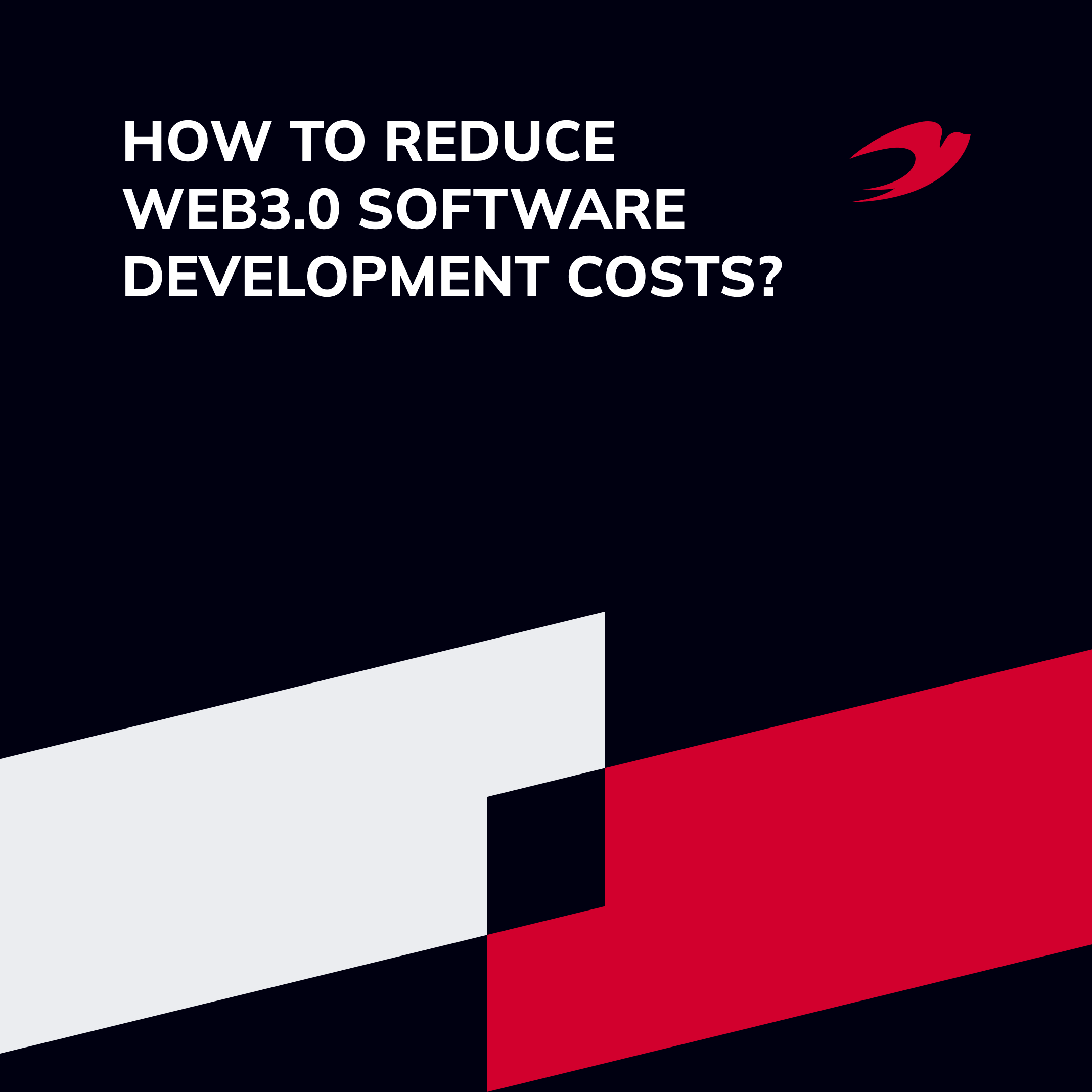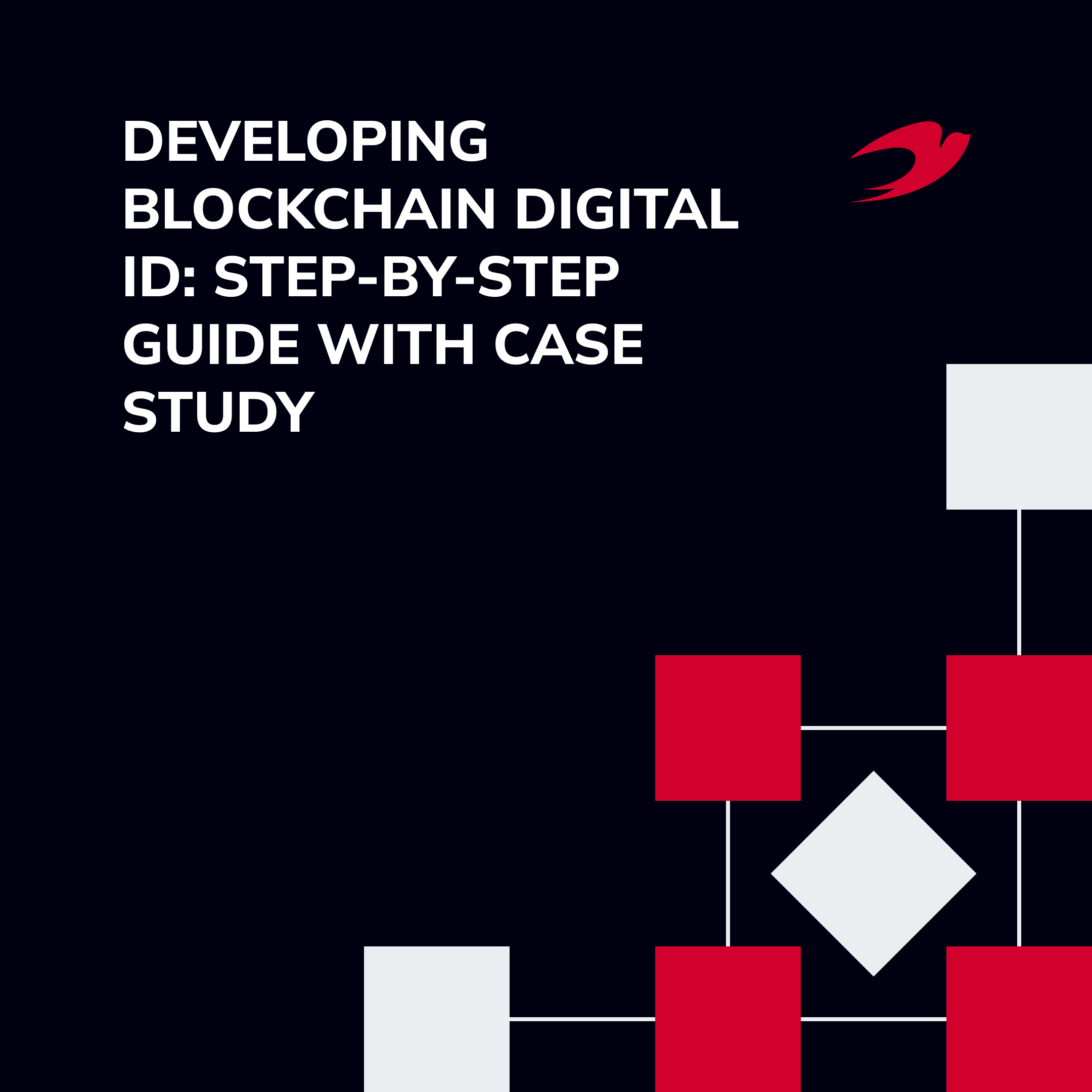Decentralized Physical Infrastructure Networks (DePINs) are to be among the main trends in the cryptocurrency market in 2024. This is due to their real-world utility and the ability to take market share from Big Tech. DePINs are blockchain protocols that enable the creation, maintenance, and operation of physical hardware infrastructure on an open and decentralized basis. They use tokens to incentivize communities (not corporations) to build decentralized physical infrastructure networks from scratch.
Want to build your DePIN based project?
The DePIN industry covers infrastructure for wireless communications, computing resources, data storage, artificial intelligence, electric vehicle charging, telecommunications, sensors, and much more. Let us know in which area you want to develop and we will properly draw up the requirements for your future product. Contact us for a quick chat & requirements definition.
In this article, we want to discuss the Solana DePIN ecosystem and how to build DePIN project.
Table of Contents:
- Importance of building a strong and efficient DePIN project
- Blockchain platforms for building DePIN
- How to choose the right platform for DePIN development?
- What platforms do we use at IdeaSoft when building DePIN?
- Best practices for building DePIN
- Summary
Importance of building a strong and efficient DePIN project
DePIN has something that is rare in the cryptocurrency sector: real-world utility. DePIN services such as wireless communication and cloud computing can attract demand from various industries, including consumer, media, gaming, and proof-of-work (PoW) mining.
More importantly, most DePINs compete with centralized technology companies rather than the powerful central banks and financial institutions that decentralized finance (DeFi) is trying to replace. Instead of reinventing the wheel, DePINs are creating open and decentralized markets for the same services traditional technology companies offer.
Building DePIN for computing, wireless connectivity, data storage, artificial intelligence, and service marketplace has advantages. And they are huge compared to centralized Big Tech. Here they are:
- Resistance to censorship. DePIN is a permissionless environment with no centralized organization that can censor users or disable services.
- Single-point outages. In June 2023, Amazon Web Services (AWS) faced global outages that affected the online operations of several companies in the United States. Food delivery apps could not fulfill orders, smart home devices did not respond to requests, websites did not load, and users complained about the inability to log in to their accounts. DePINs will not face such single-point failures, as these networks are managed by independent nodes scattered worldwide.
- Transparency and immutability. DePINs use blockchain ledgers to settle and record transactions. The data stored in public blockchains is accessible to everyone and cannot be changed or deleted.
- Open market. DePIN is an impartial open market that does not discriminate against small and individual buyers. For example, due to the high demand for computing resources, it is difficult for individuals and small corporations to purchase high-performance GPUs, which centralized suppliers usually reserve for large customers.
- Cost-effectiveness. Some DePIN services, such as decentralized data storage, offer users cheap alternatives to traditional counterparts. For example, according to a report by Messari, the monthly cost per terabyte offered by DePIN is 70% lower than that of centralized providers such as Amazon S3.
- Privacy. There is growing distrust in how large tech companies handle sensitive data they receive from customers. Users are concerned about the misuse of their personal data. Instead, they can rely on trusted DePIN service providers with built-in privacy technologies.
- DePIN crypto coins. DePINs use crypto incentives to attract infrastructure providers and end users. For example, wireless provider Helium allows customers to earn cryptocurrency tokens when they share their location data. Creating DePIN tokens stimulates the influx of new users and helps identify areas that need better network coverage and improved service quality.
Cloud computing is one of the main markets in which DePIN players try to win back from centralized technology companies. According to Mordor Intelligence, the cloud computing market will generate $68 billion in revenue in 2024, with Amazon Web Services, Microsoft, Google, Alibaba, and Salesforce remaining the largest players.
The global cloud computing market will grow to $1.44 trillion by 2029. Messari assumes that DePIN will be able to attract at least a portion of the global revenue from this sector. Similarly, we see potential in DePIN’s wireless networks, which collectively earned $0.8 million in 2023.
Blockchain platforms for building DePIN
Our IdeaSoft team has thoroughly researched this topic. We have investigated major blockchain networks and made conclusions regarding their fit for DePIN development. Here are the top 3 blockchain platforms for building DePIN.
Solana
Solana is one of the best blockchains for DePIN. Its attractiveness stems from its combination of low transaction costs and high throughput, making it ideal for DePIN projects on Solana. Despite recent developments with Denсun and the emergence of promising Layer-2 solutions, Solana maintains its appeal due to its unparalleled transaction throughput capabilities.
Extensive throughput capabilities are indispensable in the context of DePIN on Solana, where a significant volume of data needs to be rapidly processed and managed. The platform’s architecture incorporates a unique feature known as storing state. The functionality of this is similar to dedicated memory storing which further enhances Solana’s suitability for data-intensive projects like DePIN.
Moreover, Solana’s ecosystem has been bolstered by notable projects like Helium, a prominent example within the decentralized infrastructure space. Helium’s transition to Solana from its native blockchain network in late 2023 underscores the platform’s favorable environment and developer-friendly ecosystem.
Solana’s combination of low transaction costs, high throughput, and developer-friendly architecture makes it an optimal choice for DePIN coins development. Solana blockchain ensures efficient data processing and management while fostering a conducive environment for project growth and innovation.
IOTA
IOTA represents a distributed ledger technology (DLT) tailored for the Internet of Things (IoT). DLT operates as a network of distributed nodes, synchronizing digital data and value across various locations without a central administrator, unlike centralized databases. This is why DePIN on IOTA is highly attractive.
With its DAG architecture, IOTA can promptly validate transactions in parallel, enhancing scalability and transaction speeds. Additionally, without miners, IOTA transactions bypass delays associated with waiting for inclusion in newly created blocks.
Transactions on the IOTA network are processed without incurring fees, eliminating the need for miners typically incentivized to process transactions. At the same time, the IOTA Tangle boasts one of the lowest energy footprints among public DLTs. This energy-conscious design reflects IOTA’s commitment to sustainability, distinguishing it in the realm of blockchain technologies.
Traditional blockchains face challenges in processing small transactions due to limitations like block size, congestion, high transaction costs, and computational overhead. IOTA’s Tangle addresses these obstacles through parallel processing, the absence of miners, and fee elimination, making it ideal for handling microtransactions, especially in IoT devices and applications.
COSMOS
Cosmos network stands as a continually expanding ecosystem of interconnected applications and services. It leverages hubs, the Tendermint consensus algorithm, and the Inter-Blockchain Communication (IBC) protocol to facilitate secure communication between blockchains.
Each Cosmos application functions as its own blockchain, unaffected by network congestion commonly experienced on Ethereum. Moreover, blockchain functionality and validator sets can be tailored to specific requirements.
DePIN on COSMOS can be built vertically, horizontally, or as they see fit. They may opt to implement core technological alterations or introduce new features. As more projects build on Cosmos, network effects amplify. Each blockchain can seamlessly and securely communicate with others using the IBC protocol.
How to choose the right platform for DePIN development?
Here’s a step-by-step guide to help you choose the most suitable blockchain platform to build DePIN:
- Define project requirements. Consider aspects such as the type of decentralized application you’re building, scalability needs, transaction speed, consensus mechanism, interoperability requirements, governance model, and any specific features or functionalities you require.
- Assess scalability and performance. Look for platforms that offer high throughput, low latency, and efficient consensus mechanisms to ensure smooth operation even during peak usage.
- Evaluate security and stability. Look for platforms with robust security protocols, battle-tested smart contract languages, formal verification capabilities, and a track record of preventing security vulnerabilities and attacks.
- Review developer tools and ecosystem. Evaluate each platform’s developer tools, libraries, SDKs, documentation, and community support.
- Сost and resource requirements. Evaluate each platform’s cost implications and resource requirements, including transaction fees, gas fees, hosting costs, development costs, and ongoing maintenance expenses.
You can choose the right platform for DePIN development by following these steps.
What platforms do we use at IdeaSoft when building DePIN?
The platforms we choose at IdeaSoft for building DePIN are contingent upon several key factors:
- Blockchain infrastructure. Our selection heavily relies on the maturity and relevance of blockchain infrastructure specifically tailored to DePIN’s requirements. This includes considerations such as the availability of similar niche projects for potential collaboration or interoperability, as well as the ease of integration for future enhancements.
- Tech stack familiarity. The expertise and familiarity of our development team, along with the broader technological landscape, play a crucial role in platform selection. We prioritize platforms that align with our team’s proficiency, ensuring efficient development and maintenance processes.
- Application architecture and business logic. The architecture of the application and the underlying business logic significantly influence our platform choice. Whether it’s the need for privacy, scalability, or specialized features like IoT integration, we tailor our selection to best accommodate DePIN’s specific requirements.
IdeaSoft tip: For instance, if privacy is paramount, opting for a sidechain on Cosmos offers a closed ecosystem that can be customized to your product/project needs. Alternatively, if scalability is a priority, Solana emerges as a favorable option due to its open and scalable nature. Similarly, for projects requiring seamless integration with IoT devices, leveraging the capabilities of platforms like IOTA proves advantageous.
By carefully assessing these factors, we ensure that the platforms we employ for building DePIN are optimally suited to realize its objectives effectively. We can develop DePIN on Solana, COSMOS, IOTA, and several other blockchains.
Best practices for building DePIN
Here are the 5 best practices you must adhere to establish a sustainable Web3 DePIN ecosystem.
Environmental stewardship
With the proliferation of digital platforms, the environmental impact of data storage and processing has become more apparent. Implementing a sustainable DePIN involves prioritizing eco-conscious practices, such as leveraging renewable energy for data centers, optimizing algorithms to reduce energy consumption, and championing electronic waste recycling initiatives. By reducing its carbon footprint, DePIN can contribute to global endeavors to address climate change.
Community participation
Active community engagement lies at the core of DePIN’s sustainability. By nurturing an inclusive environment where diverse perspectives are valued and respected, DePIN can tap into collective wisdom to effectively address societal challenges. Initiatives for community involvement, such as open forums, feedback mechanisms, and participatory decision-making processes, empower stakeholders to meaningfully shape the platform’s development and governance.
Ethical handling of data
In the digital era, safeguarding data privacy and security is imperative. Sustainable implementation of DePIN involves robust data governance frameworks that prioritize user privacy, consent, and data security. Adhering to ethical data practices (anonymization, encryption, and user-controlled data access) fosters trust among users and upholds principles of transparency and accountability.
Economic resilience
Sustainability encompasses economic viability alongside environmental and social aspects. Developing a sustainable DePIN necessitates establishing a resilient economic model that ensures the platform’s long-term viability. This may involve exploring diverse revenue streams while maintaining affordability and accessibility for all users.
Ongoing innovation
Sustainability requires a commitment to continual innovation and enhancement. DePIN’s sustainable development entails embracing emerging technologies, devising innovative solutions to societal challenges, and adapting to evolving user preferences and needs. DePIN can remain adaptable and resilient amidst change by cultivating a culture of innovation and experimentation.
Summary
Fighting Big Tech is not easy. These companies offer reliable, high-quality services on a large scale that DePIN simply cannot compete with now. It may take years for DePIN to build a supply chain infrastructure that can compete with the established market giants. However, once DePIN industry grows and gains momentum, its value proposition of decentralization, immutability, privacy, and low cost may become too beneficial to ignore.




